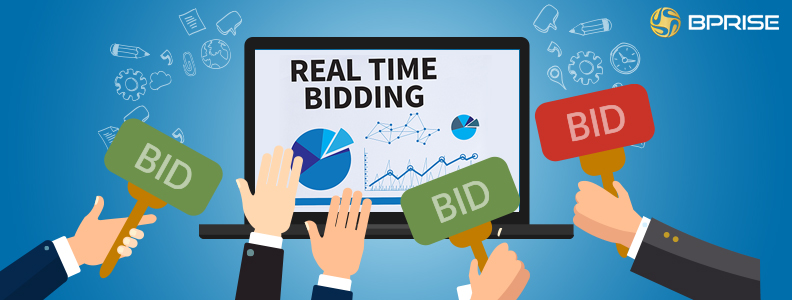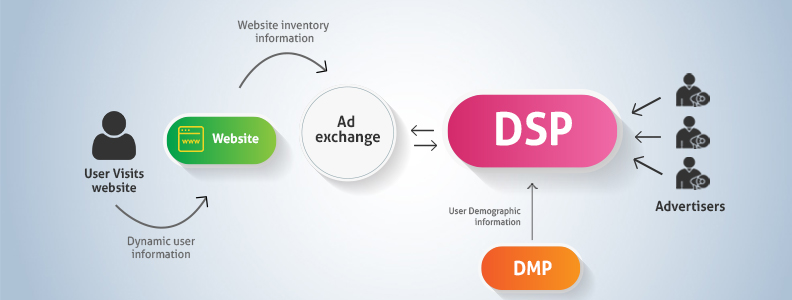At BPRISE, we employ sophisticated programmatic advertising to best achieve positive brand recall and customer engagement for our clients. This doesn’t just mean stocking up on the knowledge and technology required to ensure hyper-personalised marketing on web and mobile. If anybody wants to get Sequential Retargeting right, then the first thing they need to do is have a sense of humour about it!
Funny Side Up
Sequential Re-targeting is a lot like delivering a joke. There is “The Set-Up”, where you familiarise your viewers with the basics and fundamentals of your products and services. This is what sets the tone for what’s to follow and gives the target audience an idea of whether they want to know more or not. “The Set-Up” is the proverbial stage of the early rounds of communication that get served to people online.
Next of course, comes “The Punchline”. This is the clinching moment in the user journey where a customer is convinced enough about the brand’s story and its offerings to finally crack a smile and make a purchase. Pow!
But this stand-up routine in digital advertising need not be a linear process. There may be people joining in on the fun while you’re in the middle of your ad campaign or product launch, or there are even those who leave right at the start without giving you a patient ear. How do you then make sure that everybody gets your marketing messages loud and clear? From the beginning, through the middle and all the way till the end? The answer is Sequential Re-targeting.
The “sequence” here doesn’t mean holding different group tours for people who visit you in batches and hear the same old sales speech. Regardless of what stage your product launch is in, the sequential re-targeting campaign starts, adjusts and evolves for every user at their time and place of engagement with your brand.
Automated Bucketing
“The Set-Up” takes time and skill. As mentioned above, the delivery and nature of sequential re-targeting typically changes for every distinct, new customer taking a seat amongst the audience. All first timers aren’t subject to the same “generic retargeting” and aren’t slumped into one single broad bucket. At BPRISE, our programmatic engine seamlessly segments the continuous influx of new visitors. This is not just based on demographics and location parameters, but also depends on the source of traffic, dates of user activities and expressed behaviours.
We are able to track users across the web’s many media platforms and segregate the hot leads from the cold ones. Through a funnel for delivery into BPRISE’s Premium Ad Network, Facebook ads on third party apps or websites, SMS and even email, we are able to mix notifications and track the chain of events to your target audience with computerized precision.
Old Wine, New Bottle. Cheers!
So, you’ve delivered the set-up and your audience isn’t anywhere close to hearing that punchline. And if you’re only building a name for your brand then there are other hiccups like being the first in customers’ minds while addressing their concerns about price, doubts, credibility and product quality.
What do you do? Go for what stand-up comedians refer to as a “Callback”. A comedian routinely tells a joke with a specific punchline and then, later in the show, tells a different joke with the same punchline. This gets a bigger laugh the second time around. Similarly, we help rectify the set-up and deliver freshness for the hard-to-impress crowd, till they are better positioned in the sequence to hear the same punchline.
We devised a callback for a car brand that found itself in that very pickle. The retargeting was broken down into small sequences like this:
Addressing Problem Number 1. Campaign ‘A’:
1st March: SMS campaign
3rd March: Email Campaign
5th March: Campaign on Facebook and Ad Networks
Addressing Problem Number 2. Campaign ‘B’:
15th March: Switch to a new campaign on Facebook and stop visibility on Ad Networks (only for customers who have been through Campaign ‘A’)
Addressing Problem Number 1 in a different way. Campaign ‘A2’:
20th March:New SMS campaign and Facebook Activation to users who didn’t convert from the first batch
Addressing Problem Number 3 for customers who are technically ahead in the sequence. Campaign ‘C’:
Look for customer re-engagement.
20th March: New SMS Campaign
20th March: New Email Campaign etc.
Everybody needs to be nudged differently. So, we made sure that the next time the customers logged onto the internet, the car brand was able to pick up from where each of them left off, just like old friends!
Now this can get complicated:
500 car showrooms X An average of 10 footfalls a day = A single day’s batch of data.
But with automated bucketing and tracking that we do at BPRISE, we easily spot and report which segment of which batch of prospects isn’t still laughing along and why. We understand the cycles, which sources offer easier conversions, their bounce rates and re-visiting patterns. This allows us to efficiently figure out where a shift in the marketing strategy needs to be carried out. The system lets us know if the marketing creative needs re-work, or if the retargeting should happen on a different platform or if the rhythm of the campaign frequency needs retouch. Once we spot a conversion though, that needle in the haystack is then promptly pulled out of the funnel to avoid wasting ad spends.
Speaking of which, I feel that the measurement of success in digital marketing shouldn’t be restricted to a metric like return on ad spend (ROAS) alone. Every sequential strategy should also be judged based on whether the engagement rates on ads improve, whether the returning visitors increase, and if the click through rates reflect precision targeting or not. The goal in sequential re-targeting is to serve smart and relevant ad experiences to guide prospects through their customer journey.
Programmatic advertisers typically chart out a funnel diagram as the trend, but I disagree. “Funneling” of layers of data and user journeys need not taper down to a small percentage of acquisitions. The user journeys under Sequential Re-targeting campaigns tend to look more like tributaries of many big rivers branching out into loops over time. All these users, however, are individually pursued to reach the logical conclusion delta of converted sales. That’s the trick.
If you have questions about sequential retargeting, leave a comment and I’d be happy to help!










